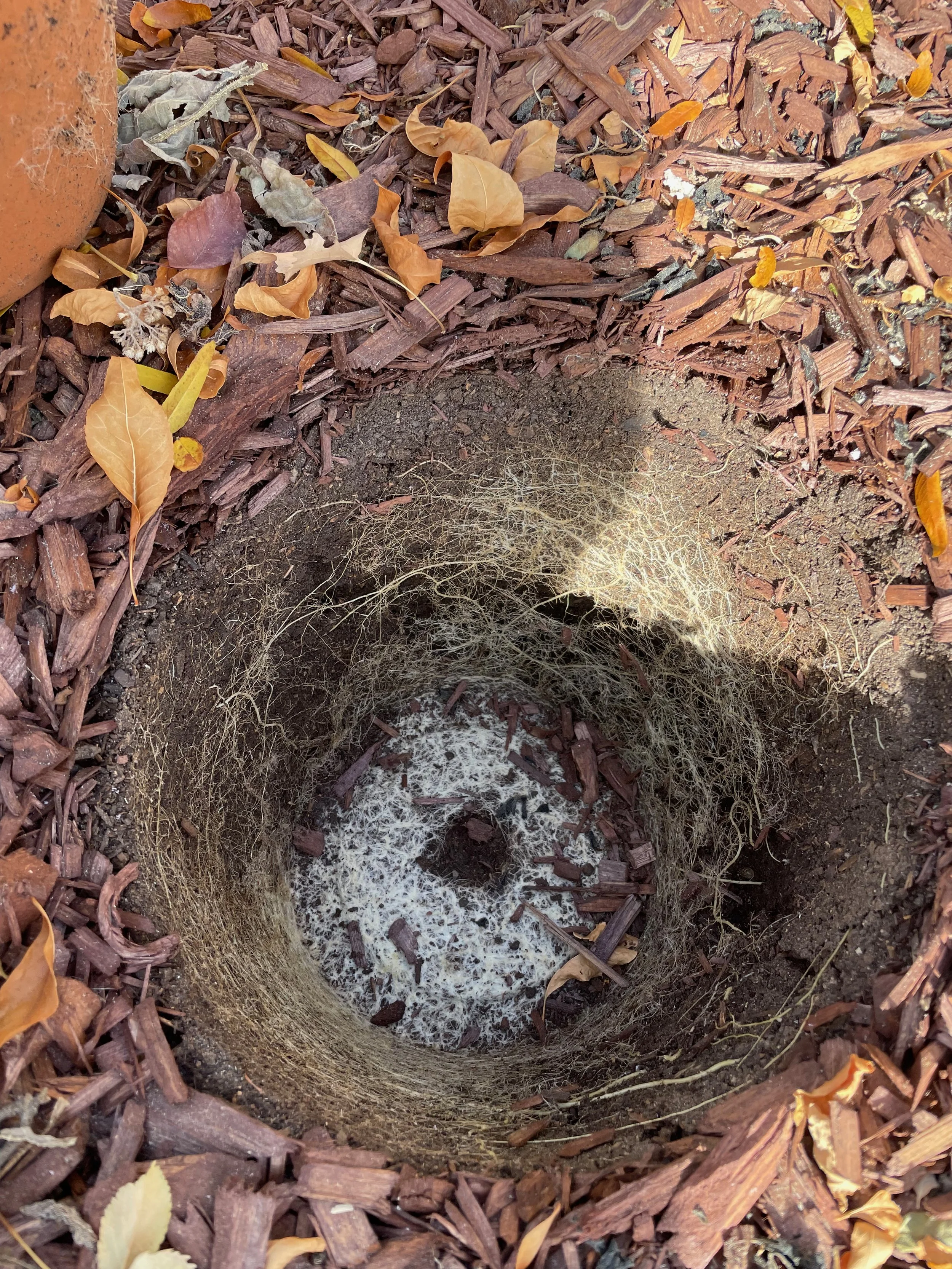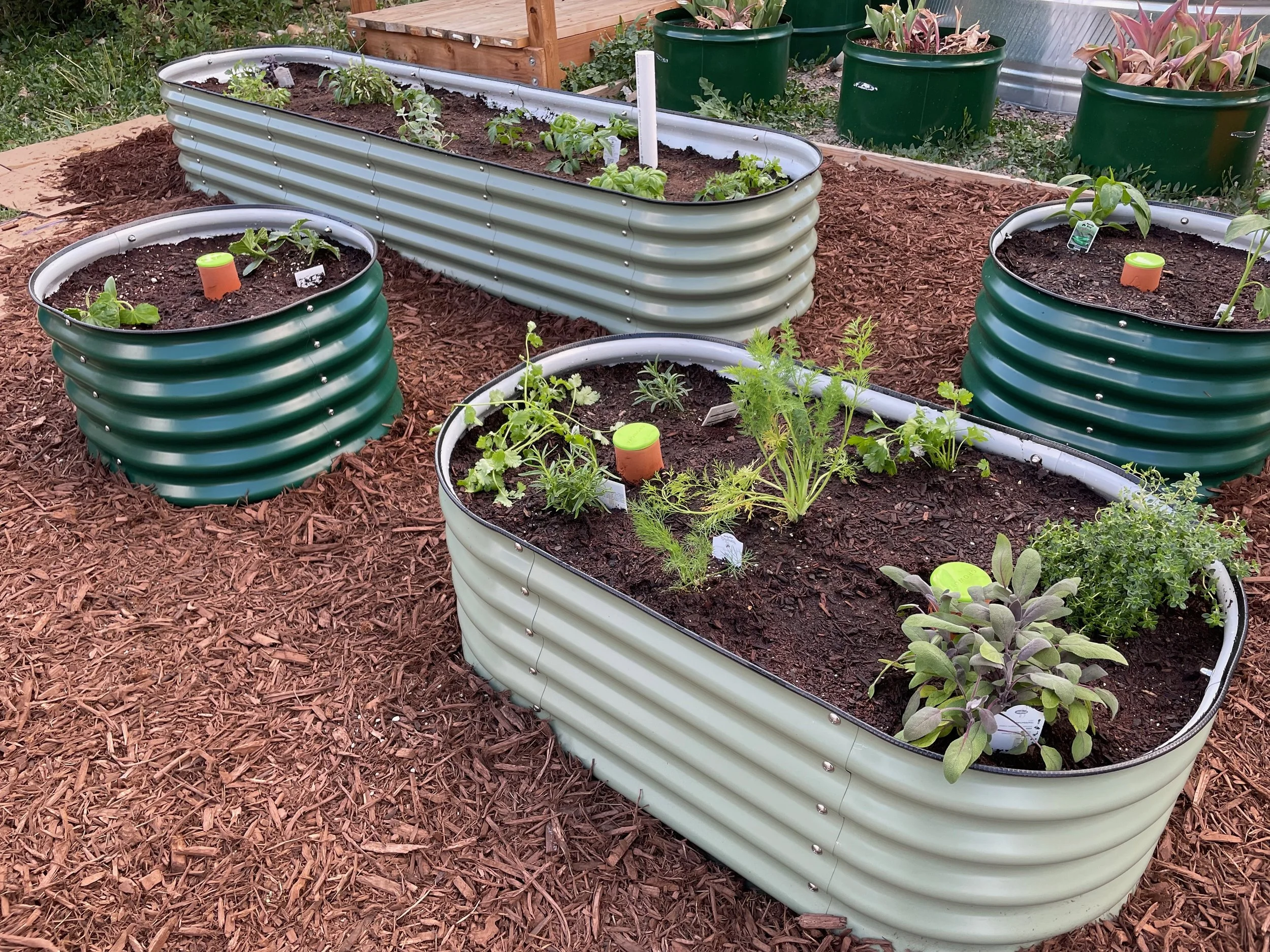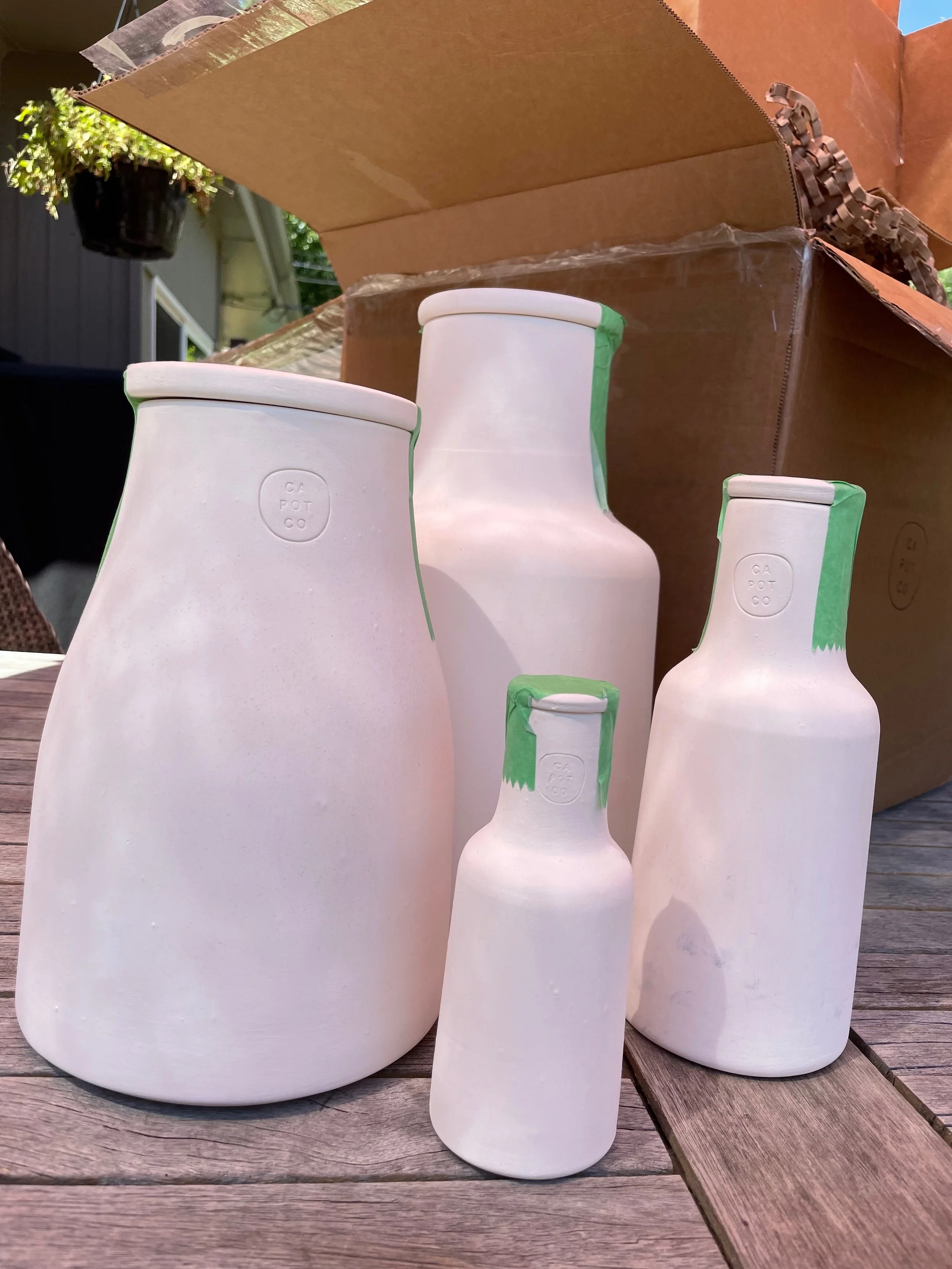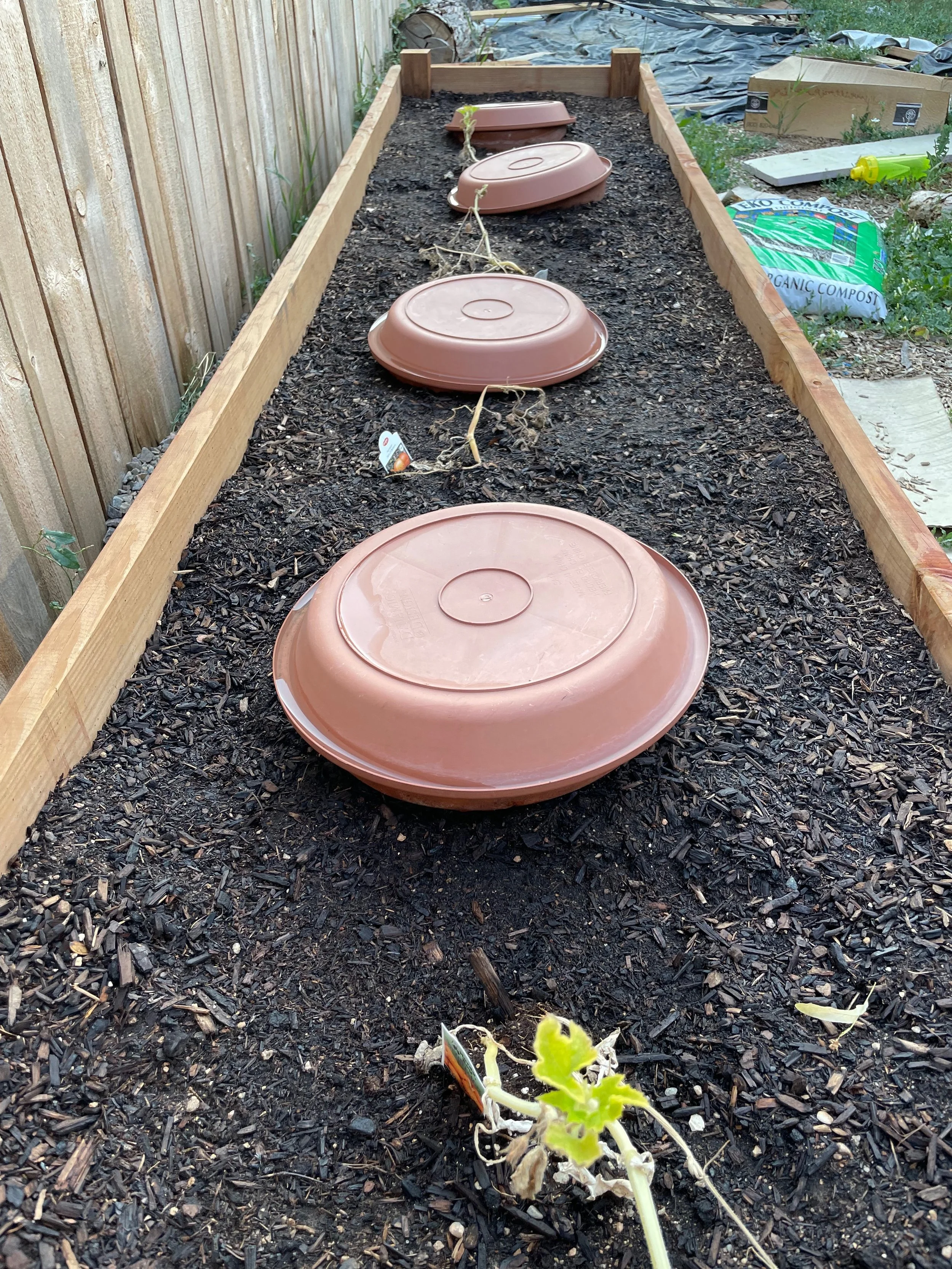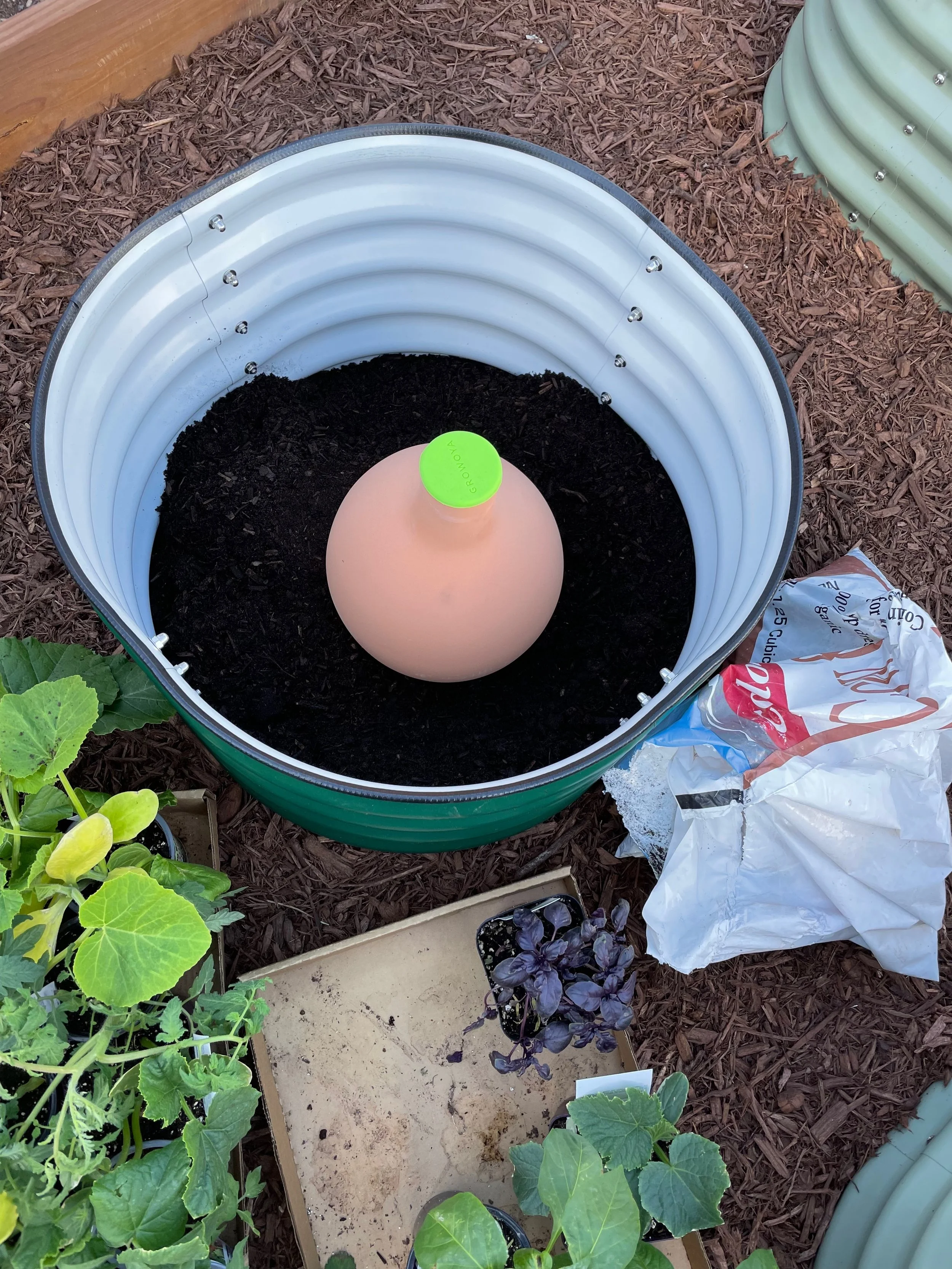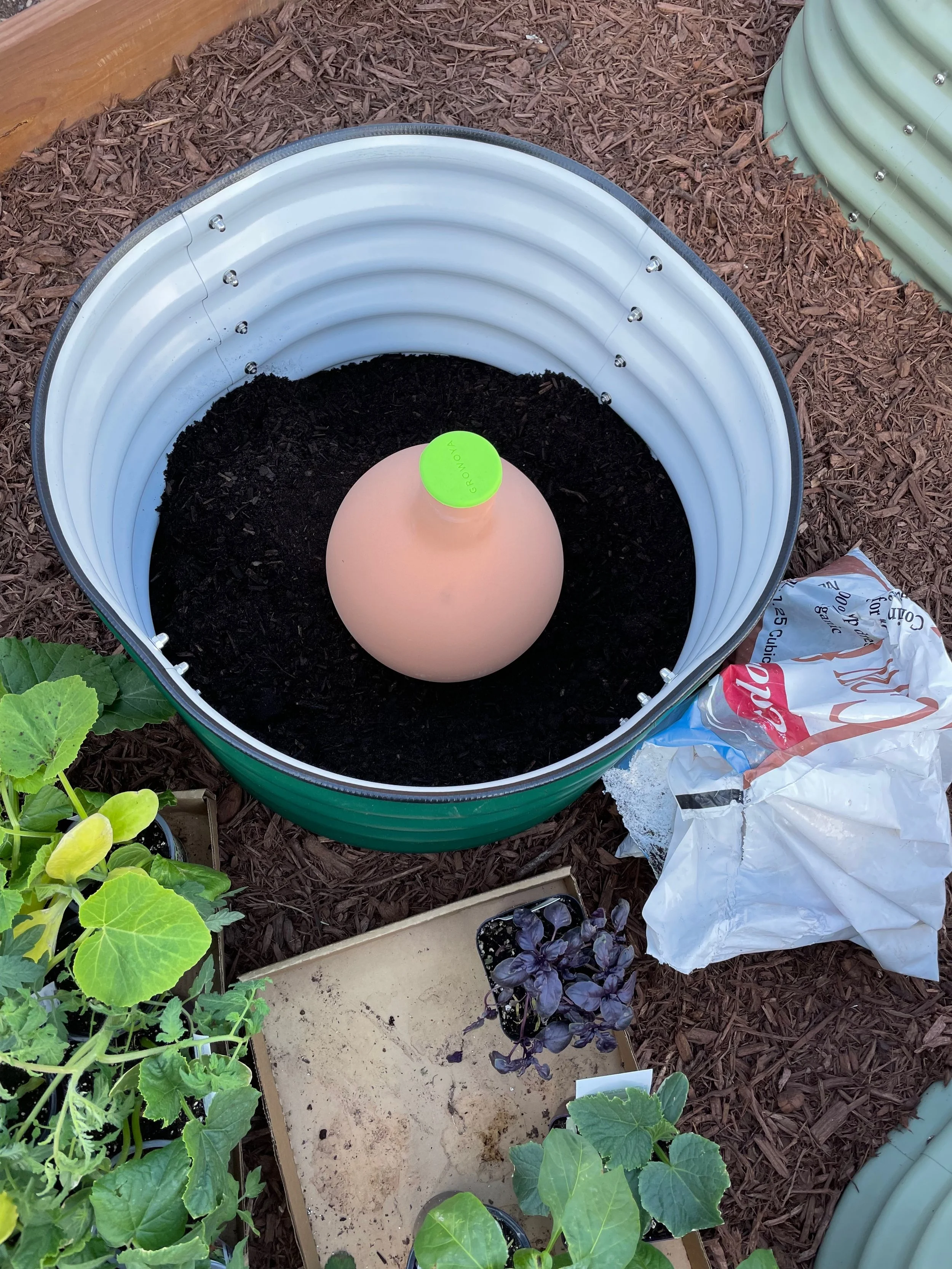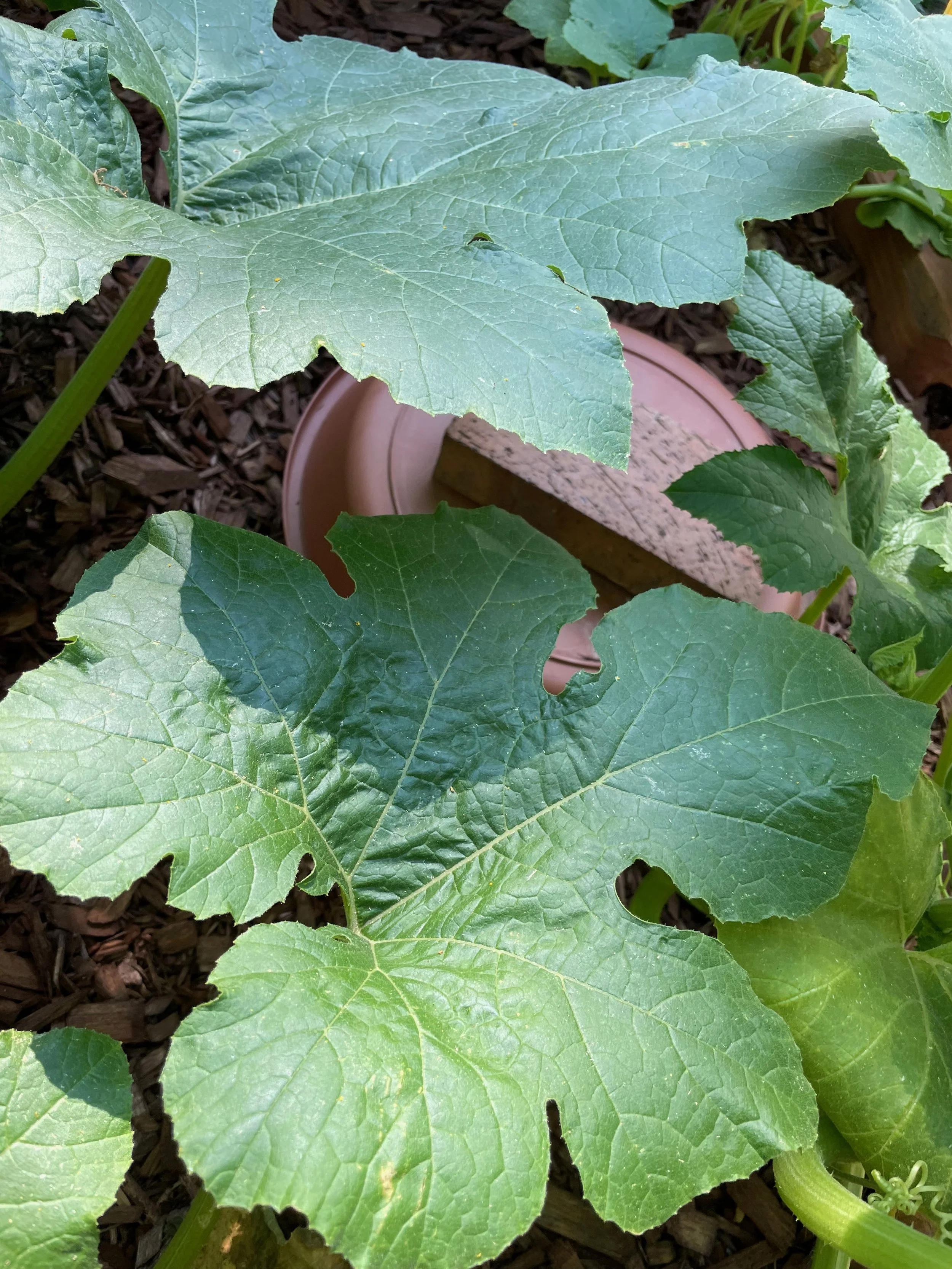Irrigation with Ollas
Using Olla Pots to Water Your Garden Plants
I’ve spent most of my gardening life in hot, dry places. First it was Sacramento, California. Then Los Angeles. Now I’m outside of Denver, Colorado. As a gardener, I’ve had to learn how to be water-wise and use water as efficiently as possible.
That need led me to experiment with various irrigation techniques and ideas from around the world. One day, while living in Southern California, I visited a place called the Urban Homestead in Pasadena. It's a working farm on a standard city lot—and incredibly inspiring. They grow all kinds of produce, but what stuck with me most was their use of ollas to irrigate the entire farm.
Learning about ollas from the Urban Homestead transformed my gardening practices. Today, I’m going to show you how I use them in my own garden. I’ll walk you through a variety of systems, including an easy DIY method, and explain how I incorporate ollas in different contexts. My hope is that you’ll be inspired to try them in your garden, too.
I have been gardening with ollas for several years now, and they are a game-changer for me. I live in Colorado where our summers are hot and dry. So maintaining consistant moisture levels — especially for vegetables and non-native flowers — can be a big challenge. I don’t have a sprinkler system, either, so ollas are a big part of my irrigation plan every summer. They are sustainable, efficient, and relatively care-free!
What is an Olla?
Ollas are an ancient watering system that are sustainable, water-wise, and eco-friendly. An olla is an unglazed terracotta pot that you bury in the ground. Because it’s unglazed, when you fill it with water, the moisture seeps slowly into the dry soil around it, creating an irrigated zone directly where plants need it most—at the roots. Ollas come in different shapes and sizes, but they all function using this same principle.
Here’s the magic: if the surrounding soil is already saturated, the water stays in the olla. Once the soil begins to dry, water starts to seep out again. It’s passive, responsive, and efficient—almost like magic, though backed by solid science.
Ollas have been used for thousands of years in arid regions around the world, including by Native American communities and cultures in China and the Middle East. As our climate changes and gardening becomes more challenging in dry regions, ollas are worth revisiting.
Why are ollas eco-friendly?
First of all: they are made of terracotta, a renewable resource. And most ollas are plastic-free — or largely plastic-free. But the biggest benefit is that the water for your plants doesn’t sit on the surface of the soil. It goes right where it’s needed: at the roots. This reduces evaporation and makes more moisture available to the plants themselves.
An example of ollas in pots
Why Choose Ollas?
There are several advantages to using ollas:
Water Efficiency: They only release water as needed. Unlike sprinklers or drip irrigation, they won't overwater.
Targeted Irrigation: Water goes straight to the roots—not the leaves or soil surface—reducing evaporation.
Root Development: Plants naturally grow roots around the olla to access the moisture. When I pull up an olla in the fall, it's often surrounded by a thick net of roots.
For example, I love using ollas when growing pumpkins, squashes, and melons. When I dig them up in autumn, the olla is wrapped in roots. Those plants have spent all season drawing from that consistent moisture source.
How do you use ollas when gardening?
I use ollas with a range of plants — but especially with my tomatoes, melons, pumpkins, squash, and zucchini. These thirsty plants find the olla very quickly, and they benefit greatly from good root watering. I also have ollas that work well in large containers. They keep my containers from drying out too fast.
Tips for Gardening with Ollas:
Ollas work best with plants that have fine, fiberous roots. Tubers like dahlias or potatoes don’t benefit as much — but you can still use an olla system with these plants. They just won’t benefit quite as much.
If your ground freezes — like mine does — you’ll need to pull the ollas up in the fall and put them back in in the spring. Otherwise the moisture in the soil can cause the olla to crack, and a cracked olla doesn’t work.
If your ground freezes, I don’t recommend using ollas with perennials. If you have to pull them out of the ground every fall, your plants’ roots will be disturbed. So save them for annuals like your herbs and vegetables and fun flowers!
Plant in rings around your ollas with plants that need the most moisture closest to the olla. I have found this works much better than planting in rows.
There are several different types and sources for ollas. Each works on the same principle, but they have different benefits. Check them out below!
Ollas in a series of raised beds make irrigation super easy!
Types of Ollas I Use
I use four different types of ollas, depending on the context. Each has its own benefits.
GrowOya
The first ollas I ever used were from Grow Oya, and they changed my gardening game big time.
This unglazed terracotta vessel comes in various sizes and includes a silicone lid. I use these in pots and raised beds. Their generous volume means I don’t have to refill them as often — even in the peak of summer, I only have to refill the largest size every 5-8 days. Though they do need to be dug up and stored during winter to avoid cracking. I keep mine in a greenhouse, and as long as they’re dry, they hold up just fine.
What I Love:
Grow Oyas come in a range of sizes. The big ones are fabulous if you travel a lot — or have thirsty plants!
Where I Use Them:
The largest size keeps my tomatoes happy all summer long! They have eliminated blossom-end rot (the key is consistant watering)
Olla Tips:
Grow Oyas are the most fragile of the olla options, so be sure you have a sheltered place to store them over winter — if that’s a concern.
Discount Code: MIDMODERNMAMA
for 10% off
Thirsty Earth
Thirsty Earth has taken the olla idea and turned them into an irrigation system. I LOVE this!
This is a modular system of smaller ollas connected by tubing to a shared reservoir. I use them extensively in my vegetable garden—for tomatoes, peppers, and cucumbers. The system comes with a plastic reservoir you fill every few days (more frequently in hot weather). Each olla draws from the reservoir until it’s empty.
I also use this system in pots along my fence, filled with thirsty tropicals like canna lilies. The consistent hydration has kept them healthy and blooming earlier than ever.
What I Love:
Thirsty Earth ollas are easy to set up, and I generally only have to fill the reservoir about every 7-10 days.
Where I Use Them:
My vegetable garden is filled with Thirsty Earth ollas — keeping those roots cool and hydrated.
Olla Tips:
Don’t quote me on this, but I have left these in the ground over winter, and they survived. But I don’t recommend this lazy gardener approach!
California Pot Company
The California Pot Company hand makes each of their ollas, and they are gorgeous! I love functional beauty in the garden! This is a great gift idea, too!
This hand-thrown, unglazed terracotta olla has a sleek cylindrical shape that fits well in many pots. It keeps container plants hydrated for longer, and its straight sides make it easier to store in winter than more bulbous designs.
What I Love:
The heft and quality of each of these ollas is apparent. They are an elegant solution. They come in a range of sizes, too.
Where I Use Them:
These ollas are more cylindrical and are perfect in pots and planters.
Olla Tips:
Put your olla in first when potting up plants, then pot around them for the best results.
DIY Ollas
I also have a guide to making your own ollas which is a simple and relatively inexpensive option. Making your own olla is simple and cost-effective. I use 12-inch terracotta pots for large plants like watermelons and squash.
DIY ollas are easy to stack and store for winter, and perfect for gardeners on a budget.
What I Love:
DIY ollas are an easy project — and you have lots of control over the size.
Where I Use Them:
My biggest water-hogs like melons and squash are well-hydrated with my DIY ollas. They are simple and easy to refill.
Olla Tips:
Because of the shape of most terracotta pots (the basis for this project), you’ll need more room to use these ollas. But they will stack for winter storage — a bonus.
Check out my whole guide to making your own ollas here:
Getting Started with Ollas
I typically install ollas before planting, then position plant starts close to them so roots can find the moisture source quickly. No matter what system you use, you’ll need to water regularly for the first few weeks to help roots establish and to hydrate the surrounding soil.
If the soil is especially dry, water from the olla will wick quickly into the ground. For example, when I installed my thirsty earth system in a new veggie bed, I was refilling the reservoir daily at first. But now, as the system has stabilized, I refill it every 5 to 7 days.
Healthier Plants, Fewer Problems
Ollas have dramatically improved the health of my garden. One major benefit: no more blossom end rot in tomatoes. This frustrating issue is often blamed on calcium deficiency, but it's usually caused by inconsistent watering. Ollas maintain even moisture levels, allowing your plants to take up nutrients steadily.
Ollas are a fantastic, low-tech irrigation solution. They save water, promote healthy root systems, and reduce plant stress. Pair them with other water-wise practices—like mulching and grouping plants with similar needs—and you’ll see a big difference in your garden.
There are links to all the products and resources I mentioned below. Don’t be afraid to mix and match systems based on your needs. And one last bonus: with ollas, you don’t have to worry so much about your garden when you go on vacation!
If you have any questions, drop them in the comments and I’ll be sure to answer. And don’t forget to like and subscribe.
Happy gardening!
Angela
Get gardening content in your inbox every week! Subscribe to my Substack, and you’ll never miss a thing!
Pin it!
Olla pots, traditional terracotta irrigation pots, are a fabulous and eco-friendly watering solution -- particularly for hot and dry climates. Learn about the different types of olla pots, olla gardening, and different olla watering systems -- all of which I have tried! Also: clay pot irrigation, olla gardening, ancient irrigation methods, garden irrigation clay pots, Olla irrigation benefits.







